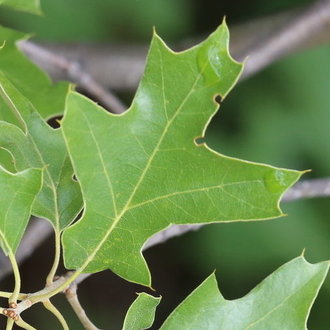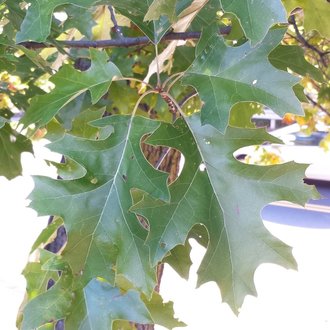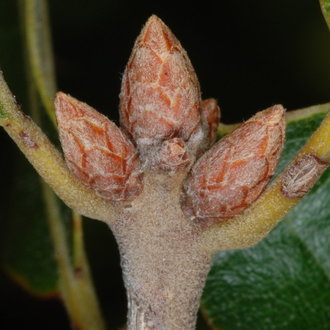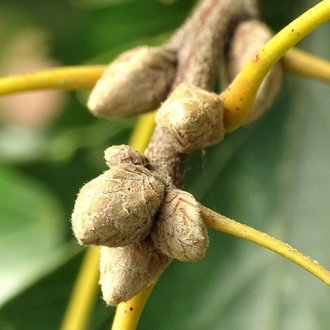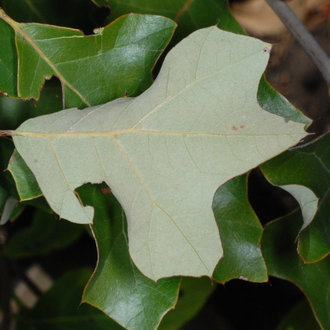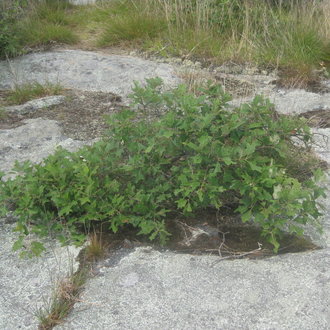Bear Oak vs Black Oak
These species are easily confused. Black oak has a much broader range of habitat preferences, but can overlap with bear oak both in dry, sandy coastal areas and more barren upland sites, and when it does, it tends to exhibit morphological changes that make it look more similar. The species are easily distinguished by differences in leaf shape, pubescence on leaves and buds, and growth habit. Acorns are similar but can be distinguished by how much of the nut the cap covers, and whether or not the scales of the cap are loose.
Bear Oak (Quercus ilicifolia) | Black Oak (Quercus velutina) |
A small, shrubby oak, typically inhabiting harsh habitats, such as fire-prone barrens or rock outcroppings, where large trees cannot grow. | A large oak with a wide distribution across eastern North America, common in much of its range, often a canopy tree in forests. More tolerant of dry, nutrient-poor conditions than most large oaks. |
Leaves with 3-7 lobes. Each lobe usually comes to one point or only a few points. Leaves have 5-14 awns. Photo © Laura, CC BY 4.0. | Leaves with 5-9 lobes. Lobes often branch at their tips, with many points at the end of each lobe. Leaves have 15-50 awns. Photo © Even Dankowicz, CC BY 4.0. |
Mature buds may be pubescent, or not. On average, less densely pubescent. Photo © Doug Goldman, CC BY 4.0. | Mature buds densely pubescent, usually so much that they appear pale in color. Photo © Shirley Zundell, CC BY 4.0. |
Leaves densely pubescent underneath, very pale in color, contrasting strongly with above. Photo © Doug Goldman, CC BY 4.0. | Leaves may have some pubescence underneath, but it is much less and tends to be concentrated along major veins. Underside of leaves only slightly paler than above. Photo © Mark Apgar, CC BY 4.0. |
Sprawling growth habit, usually with multiple trunks, growing more horizontally than upright. Photo © ttadevosyan, CC BY 4.0. | More upright growth habit, even on harsh sites where its growth is stunted and it may appear shrubby. Usually has a single, main trunk. Photo © akt2, CC BY 4.0. |
Acorn cap usually covers 1/4th to 1/3rd of the nut. Cap scales are tightly attached at the tip, and do not peel up easily. Photo © Doug Goldman, CC BY 4.0. | Acorn cap covers about half the nut. Acorn cap scales are loose at the tip, sometimes even peeling back on their own, and if not, usually easily peeled back by hand. Photo © Reuven Martin, Public Domain. |
References & External Resources
These short lists show only links helpful for ID. For a complete list of references and resources also covering other aspects of ecology, visit the links section of the full article on each plant, which is the first entry here.



